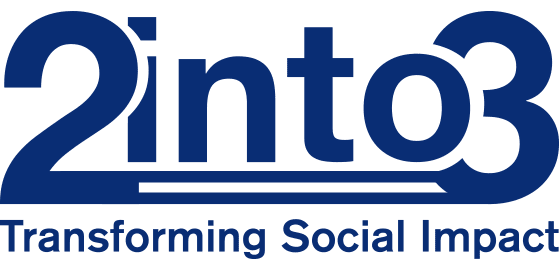How to make the most of AI in your Nonprofit
The use of AI can oftentimes cause scepticism within organisations. With any technological advancement, there will always be concern regarding job security, misuse of new technology and data security.
Despite these concerns, AI is a powerful tool that can be used in our favour. In order to keep up with technological advancements, nonprofit organisations should incorporate AI into their daily operations to improve efficiency. Knowing where to start can be overwhelming, so here are 5 tips for how to make the most of AI in your nonprofit.
Where to start with AI?
AI is a popular topic of conversation, particularly over the last few years. According to a recent study, almost half of organisations in the public and private sectors in Ireland use generative AI. However, if you haven’t started using it already, it’s not too late to get started. Two popular AI tools are Chat GPT and Gemini, which are both available as a free subscription.
For day-to-day tasks, the free version on any AI platform will suffice the majority of your needs within a nonprofit organisation. However, for more tailored results, you can upgrade your account to the premium version.
Chat GPT vs. Gemini?
ChatGPT is owned by OpenAI, a company that was founded to develop artificial general intelligence (AGI). Gemini is Google’s GenAI model that was built by the Google DeepMind AI research library. The Gemini model powered Google’s Bard GenAI tool that launched in March 2023, and has since become a popular competitor.
Both Chat GPT and Gemini have similar interfaces, but a benefit of Gemini is that it has a microphone feature and the ability to upload images. Encourage your team to try out both and see which works best for your organisation.
There are many benefits of using AI to improve your nonprofit’s efficiency.
For example, your team can use it for:
- Fundraising
- Donor Management
- Content Creation
- Impact Reporting
- Internal / External Emails
Be specific
Oftentimes, AI can cause frustration with new users if it doesn’t produce the exact information they had in mind. However, AI will only generate results on the information you’ve given. Therefore, try to be as specific as possible. Include descriptions such as your preferred tone of voice, target audience and specific context.
Example 1: Poor Description
“Summarise our board meeting notes from this document *inserts text from document*”
Example 2: Specific Description
“Summarise our board meeting notes from this document in under 500 words, highlighting action points for our Chairperson, Treasurer and Secretary. These findings should be written in a formal, descriptive tone with spellings in English (Irish/UK), not USA. *insert text from document*”
Draft and redraft
One misconception of AI is that, “AI doesn’t produce a final draft of the content I need”.
Don’t start using AI with the mindset that it will produce an error-free, specific, tailored result. You will most definitely have to re-draft whatever AI produces for you, because it only understands what you’ve told it to produce. It may not pick up any additional complexities such as: human preferences, the sector you work in (unless you tell it), the specific language you typically use and tone of voice.
You will have to redraft much of the content it produces. This shouldn’t be viewed as a hinderance, it is still helping you save time by drafting your first version. It won’t draft your final version, and if you use it as your final version, it will be very obvious.
AI is a Tool, Not a Replacement
AI should be used to augment human capabilities, not replace them. Nonprofits still need skilled staff to manage AI tools, interpret results, and make crucial decisions. Just as the smartphone cannot replace face-to-face human interaction and remote working did not entirely replace in-person meetings, AI will not replace our jobs either.
AI should be used in addition to human intelligence, to improve efficiency, particularly on mundane tasks. Artificial intelligence + human intelligence + human experience = improved outcomes.
We can use our human intelligence for things that bring value, such as this blog post, which was not written by AI. As for tasks such as drafting emails, generating ideas, summarising notes, calls, or action points, AI can take care of that.
Get in Touch
Does your team want to start using AI, but don’t currently have the bandwidth or resources? If so, an expanded team may help with limited resources – contact Fergal O’Sullivan for Talent Management services.
Written by Eilis O’Boyle, Marketing Manager, 2into3.


